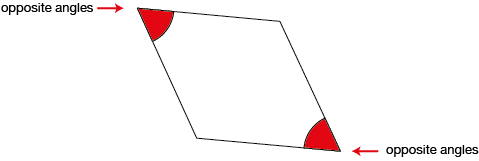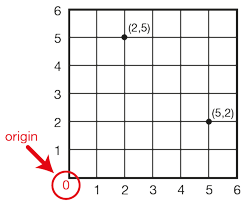O
obtuse angle
An angle that measures more than 90o but less than 180o.

pages 279, 283–284
obtuse triangle
An obtuse triangle has one obtuse angle.

pages 279, 283–284
one-color method
Replacing fraction circle pieces with a single color in order to add fractions.

page 461
opposite angles

opposite sides

pages 278, 291–292
order of operations
A way to clarify which math procedures should go first in a math sentence that has more than one operation.
1. Do calculations in parentheses first.
2. Calculate any exponents.
3. Do all multiplications and division in order from left to right.
4. Then do all additions and subtractions in order from left to right.

pages 344–345, 348, 446–448
ordered pair
A pair of numbers that gives the coordinates of a point on a grid in relation to the origin. The horizontal coordinate is given first; the vertical coordinate is given second. For example, the ordered pair (5, 2) tells us to move five units to the right of the origin and
2 units up.

pages 232, 251–254, 274–275, 277–280, 346
origin (point of origin)
The point at which the x-axis (horizontal) and y-axis (vertical) intersect on a coordinate plane. The origin is described by the ordered pair (0, 0) and serves as a reference point.

pages 249, 251, 271–272
outlier
A value that stands out from the other values in a data set.










